Predictive Analytics for Compost Efficiency
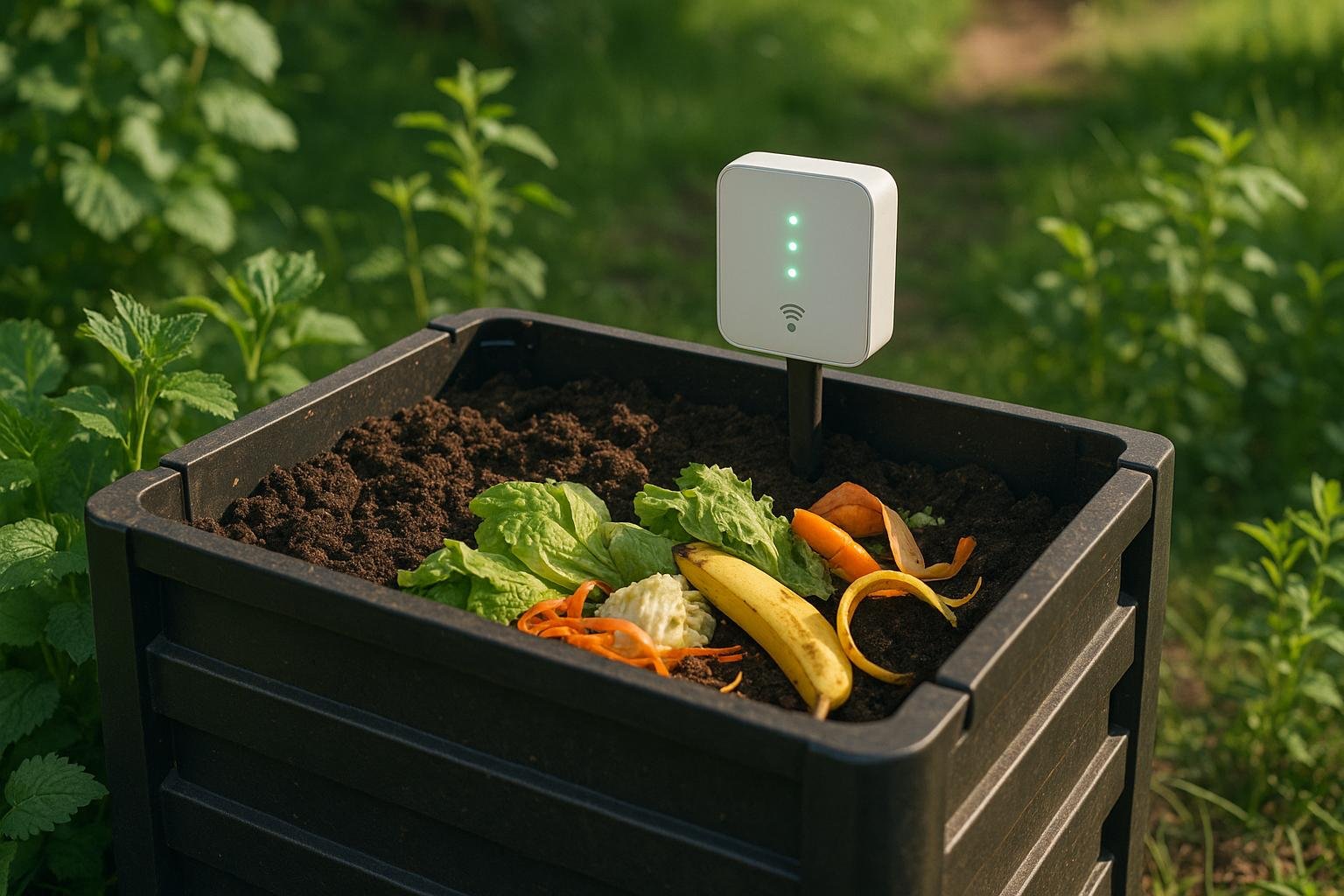
Predictive analytics is transforming composting by using real-time data to improve efficiency and quality. Sensors monitor key factors like moisture, temperature, and oxygen, while machine learning models analyze this data to predict and prevent issues. This proactive approach optimizes moisture control, accelerates decomposition, and enhances compost quality.
Key Takeaways:
- Moisture control is critical: Too much or too little moisture can disrupt microbial activity, slow decomposition, or cause odors.
- Machine learning in action: Models like neural networks and random forests predict moisture levels, enabling timely adjustments.
- Real-time monitoring: Sensors provide continuous data on temperature, moisture, and other factors, improving decision-making.
- Challenges remain: High setup costs, data integration, and staff training are barriers, but gradual adoption and public-private partnerships are addressing these issues.
Predictive analytics is already reshaping composting by making it more precise and efficient, with the potential to benefit facilities of all sizes.
How Can Data Analytics Improve Organic Waste Management? - The World of Agriculture

Recent Advances in Predictive Analytics for Composting
Composting technology is making impressive strides, with U.S. research institutions and companies leading the way in predictive analytics. These advancements are reshaping how composting facilities manage moisture control and streamline processes by leveraging data-driven approaches.
Universities like Cornell and UC Davis are at the forefront, developing algorithms that more accurately predict optimal composting conditions. Their research has shown that machine learning models can improve processing efficiency and ensure consistent compost quality. As a result, commercial composting facilities across the country are increasingly adopting these cutting-edge technologies.
The integration of artificial intelligence into composting represents a shift from reactive to predictive management. Instead of addressing problems as they arise, these systems can forecast potential issues in advance, enabling timely interventions to maintain both efficiency and quality. These breakthroughs are particularly significant in refining moisture control, a key factor in successful composting.
Machine Learning Models for Composting
Machine learning is revolutionizing composting operations, with various models tailored to meet specific challenges:
- Neural networks excel at identifying complex patterns in data, making them highly effective for predicting key compost parameters. For example, deep learning models can accurately forecast moisture levels, giving operators the opportunity to adjust conditions proactively.
- Decision tree algorithms provide straightforward decision-making pathways, making training simpler and operations more consistent. Studies have shown that these models can help reduce delays caused by moisture-related issues.
- Random forest models take decision trees a step further, combining multiple trees to deliver reliable predictions even when data is incomplete or noisy. This is particularly useful for outdoor composting, where unpredictable weather can interfere with sensor readings and decomposition rates.
- Support vector machines are proving valuable in predicting emissions and odor control challenges. By detecting subtle patterns that signal the onset of anaerobic conditions, these models enable preemptive adjustments, ensuring smoother operations and better community relations.
Data Collection and Real-Time Monitoring
Modern composting facilities are significantly improving their data collection and monitoring capabilities. Wireless sensor networks now track critical metrics like temperature (°F), moisture, oxygen levels, and pH throughout compost piles. These sensors continuously transmit data, offering insights into environmental changes.
For example, temperature sensors can detect even minor variations across a pile. This detailed information allows predictive models to identify areas where moisture imbalances may occur, helping operators maintain consistent conditions.
Moisture sensors have also evolved, moving from basic resistance-based designs to advanced instruments capable of precisely measuring water content. The data they provide feeds directly into machine learning models, enabling accurate predictions of when moisture levels might deviate from their ideal range.
Integration platforms play a crucial role by consolidating sensor data into comprehensive datasets. These platforms analyze vast amounts of information to spot trends and anomalies that might otherwise go unnoticed. Cloud-based analytics further enhance this process, allowing facility managers to monitor operations remotely and receive alerts on their smartphones when immediate action is needed.
These advancements in data-driven monitoring are transforming large-scale composting operations while also inspiring more sustainable practices at home. Tools like AIGardenPlanner, which help gardeners optimize soil health and compost use, highlight how these innovations extend beyond industrial settings. This integrated approach to data and AI is driving measurable improvements in composting efficiency and sustainability.
Moisture Prediction Methods and Results
Predictive analytics are becoming a game-changer in composting, especially when it comes to managing moisture. By blending cutting-edge sensor technologies with machine learning, these methods are helping facilities maintain optimal moisture levels.
Research-Based Approaches to Moisture Prediction
Modern sensor networks are at the heart of effective moisture management. These sensors continuously gather data on moisture levels across compost piles, enabling real-time monitoring.
To take it a step further, time-series forecasting and ensemble models analyze historical sensor data alongside weather and temperature readings. This allows facilities to predict and adjust moisture levels proactively, ensuring timely interventions that keep the composting process on track.
Comparing Different Predictive Analytics Methods
Different methods of predictive analytics cater to varying facility needs. Some are tailored for large-scale operations with complex datasets, while others focus on quicker, simpler decision-making for smaller setups. Choosing the right approach depends on factors like the size of the facility, the volume of data available, and specific operational goals. Each method offers distinct advantages, making it important to align the choice with the facility's unique requirements.
Benefits of Accurate Moisture Control
Getting moisture levels right isn’t just about better compost - it’s about efficiency and sustainability. Accurate moisture control speeds up decomposition, improves compost quality, and cuts down operational costs. Plus, it helps manage odors and emissions, which can be crucial for maintaining good community relationships and meeting regulatory standards.
The latest advancements in moisture prediction are bridging the gap between large-scale commercial operations and residential tools like AIGardenPlanner. By bringing industrial-level precision to smaller applications, these innovations are driving a broader trend toward data-driven sustainability in composting.
sbb-itb-4d6a8dd
🚀 Ready to Reinvent Your Garden?
Join thousands of homeowners who have transformed their gardens using our AI design tool. Upload one photo to explore endless possibilities.
Get your AI garden designs →Practical Applications and Challenges
Predictive moisture insights are opening new doors for composting operations, but turning these insights into actionable results comes with its own set of hurdles. As facilities explore predictive analytics, they're discovering both potential benefits and obstacles.
Case Studies from U.S. Composting Facilities
Across the U.S., composting facilities are experimenting with predictive analytics to improve moisture control and streamline their processes. The size of the facility and its specific operating conditions play a big role in how well these systems perform. Larger facilities often have the advantage of steady organic waste streams and access to more extensive data, while smaller operations tend to adopt these systems more slowly to match their unique needs.
Real-world examples highlight how monitoring tools - like sensors tracking temperature and moisture - can inform operational tweaks. These case studies showcase successes, such as improved efficiency, but also point to areas where further adjustments are needed.
Main Challenges and Solutions
Even with promising results, there are several hurdles to overcome:
- Data integration issues: Many systems lack standardized protocols, making it hard for them to communicate effectively.
- High initial costs: Setting up sensor networks can be expensive, which often delays adoption. To work around this, some facilities start small by monitoring key areas and gradually expand their systems.
- Staff training: For new technology to succeed, employees need to be trained. Combining the expertise of seasoned staff with insights from new tools can help ease this transition.
- Regulatory hurdles: Compliance with environmental monitoring rules can complicate things. Predictive systems need to be capable of generating reports and alerts that meet these requirements.
- Model maintenance: Predictive models require regular updates to stay accurate. Seasonal changes or variations in input materials mean human oversight is still a critical part of the process.
While predictive analytics in composting is still a growing field, taking a thoughtful approach - starting small, scaling up gradually, and continuously improving systems - can help facilities boost efficiency and build more resilient operations. These early findings hint at even greater potential for refining moisture management in the future.
Future Directions and Recommendations
The field of predictive analytics in composting is at an exciting juncture. While current applications show potential, coordinated efforts across technology, research, and policy can reshape organic waste management and create more efficient composting systems nationwide. Among these, better moisture regulation stands out as a key focus. Achieving these advancements, however, will require significant investment in technology and data integration.
Investing in Data and Technology
At the heart of predictive analytics lies a strong data infrastructure. Integrated sensor networks can break down data silos, offering comprehensive environmental monitoring that’s essential for accurate predictions.
Improving sensor technology should be a top priority. Advanced sensors capable of measuring multiple parameters - like moisture, temperature, pH, and oxygen - can provide the detailed datasets needed for more precise predictive models.
Public-private partnerships could play a vital role in advancing this effort. For instance, government agencies such as the EPA could team up with technology firms to create standardized protocols for data collection and sharing. This collaboration could also make it easier for smaller composting facilities to access cutting-edge analytics tools without bearing the full financial burden.
The economic argument for these investments becomes clear when you consider the long-term benefits. Facilities with advanced monitoring systems could see reduced labor costs, better compost quality, and faster processing times. However, the upfront costs are significant, requiring careful financial planning and perhaps new funding mechanisms.
Centralized data platforms offer another opportunity. By aggregating data from multiple sites, these platforms could enhance the accuracy of predictive models while lowering costs for individual facilities.
Research and Policy Recommendations
Technology alone isn’t enough - research and policy must also adapt to meet the demands of modern composting. Current predictive models often struggle with seasonal and operational variability. Research should focus on algorithms that can adjust to these changes without requiring constant retraining.
Standardization across the industry could accelerate progress. Right now, the lack of uniform data formats and measurement protocols makes it difficult for facilities to share insights or learn from each other. Industry associations and research institutions should work together to establish these standards, making predictive analytics tools more accessible across regions.
Policy frameworks also need to evolve. Many environmental regulations focus on end results rather than improving processes. Updating these policies to recognize and incentivize data-driven management could encourage adoption. For example, streamlined permitting processes or financial incentives for facilities using predictive analytics could make a big difference.
Research priorities should expand to include models that predict not just moisture levels but also optimal compost pile management practices. This could include determining the best times to turn piles or estimating when compost will be ready for use.
Incorporating weather data into predictive models is another promising avenue. Outdoor composting operations are heavily influenced by factors like rainfall, humidity, and temperature changes. Models that integrate local weather forecasts could help facilities adjust their moisture management strategies in real time, improving operational efficiency.
As these technologies become more widespread, training and workforce development will be essential. Operators need to understand both the capabilities and limitations of predictive analytics tools. Educational institutions and industry organizations should consider developing programs that combine traditional composting knowledge with modern data analysis skills, ensuring smooth adoption and improved efficiency.
A long-term, collaborative commitment is crucial. Technology companies must refine their tools based on real-world feedback, researchers need to focus on practical solutions for operational challenges, and policymakers should create supportive frameworks that encourage innovation while protecting the environment.
Success in this field will ultimately be defined by tangible outcomes: faster composting cycles, higher-quality compost, lower operational costs, and better use of organic waste. As predictive analytics continues to evolve, these benefits could become accessible to operations of all sizes, breathing new life into an age-old practice through modern advancements.
Conclusion
Predictive analytics is revolutionizing composting across the country, shifting it from a process often guided by instinct to one grounded in precise, data-driven methods. Research highlights how better moisture control, powered by data, leads to faster processing times, improved efficiency, and higher-quality compost. Machine learning is even enabling facilities to forecast optimal moisture levels days ahead, allowing them to make adjustments proactively instead of responding to issues after they arise.
At the heart of these advancements is real-time, multi-sensor monitoring. This technology provides the detailed data needed to fuel predictive models, which have proven effective across composting facilities of all sizes. These models are becoming increasingly refined as they process larger and more comprehensive datasets.
Despite the clear benefits, challenges linger. The initial investment can be steep, the technology itself can be complex, and operators need specialized training to implement and maintain these systems. However, progress is being made. Public-private partnerships, standardized data practices, and better training programs are helping to lower barriers and make these tools more accessible to composting operations nationwide.
Looking ahead, the future seems promising. As sensor prices drop and predictive algorithms grow more advanced, even smaller facilities will be able to adopt these technologies. Adding weather data and seasonal trends into the mix will further refine predictions, and centralized platforms could enable the entire industry to share insights and improve collectively. These developments build on earlier milestones in data collection and machine learning, pushing composting into a new era.
This shift isn't just about technology - it's about rethinking how we manage organic waste sustainably. With the growing importance of diverting organic waste to meet environmental goals, predictive analytics is poised to make composting more efficient and cost-effective. The research makes one thing clear: predictive analytics isn’t just a glimpse of the future - it’s already transforming facilities that are embracing precision composting today.
FAQs
How can predictive analytics make composting more efficient and improve its quality?
Predictive analytics is transforming composting by leveraging data-driven models to fine-tune critical factors such as moisture levels. Studies indicate that keeping moisture between 34.7% and 37.5% is key for effective composting. Predictive tools make it possible to maintain this balance with a high degree of accuracy.
By incorporating technologies like machine learning and IoT, predictive analytics allows for real-time adjustments, accelerates the composting process, and minimizes manual labor. The result? Higher-quality compost and a process that's more efficient and environmentally friendly.
What challenges do composting facilities face when using predictive analytics, and how can these be addressed?
Composting facilities frequently deal with hurdles like inconsistent data due to tough environmental conditions and varying input quality, which can throw off the accuracy of predictive models.
To tackle these problems, facilities can turn to IoT sensors for accurate, real-time data collection. Pairing this with advanced machine learning algorithms - such as Random Forests or XGBoost - can significantly improve the reliability of predictions. These technologies enable facilities to fine-tune critical factors like moisture levels and temperature, ensuring more efficient composting processes.
How can small composting facilities use predictive analytics to boost efficiency despite high upfront costs?
Small composting facilities have a powerful tool at their disposal: predictive analytics. These tools can help fine-tune operations by managing moisture levels, forecasting decomposition timelines, and allocating resources more efficiently. The result? Less waste, lower energy use, and reduced operational costs.
While the upfront investment might feel steep, the payoff is worth it. Facilities can produce higher-quality compost and streamline their processes, leading to noticeable cost savings down the line. Predictive analytics not only boosts productivity but also supports more sustainable practices, all while minimizing the environmental footprint.
🎨 Visualize Your Dream Garden Today!
Transform any outdoor space into a professional landscape design in minutes. Just upload a photo, choose your style, and let our AI do the rest.
Start your garden transformation now →Related posts
Related Articles
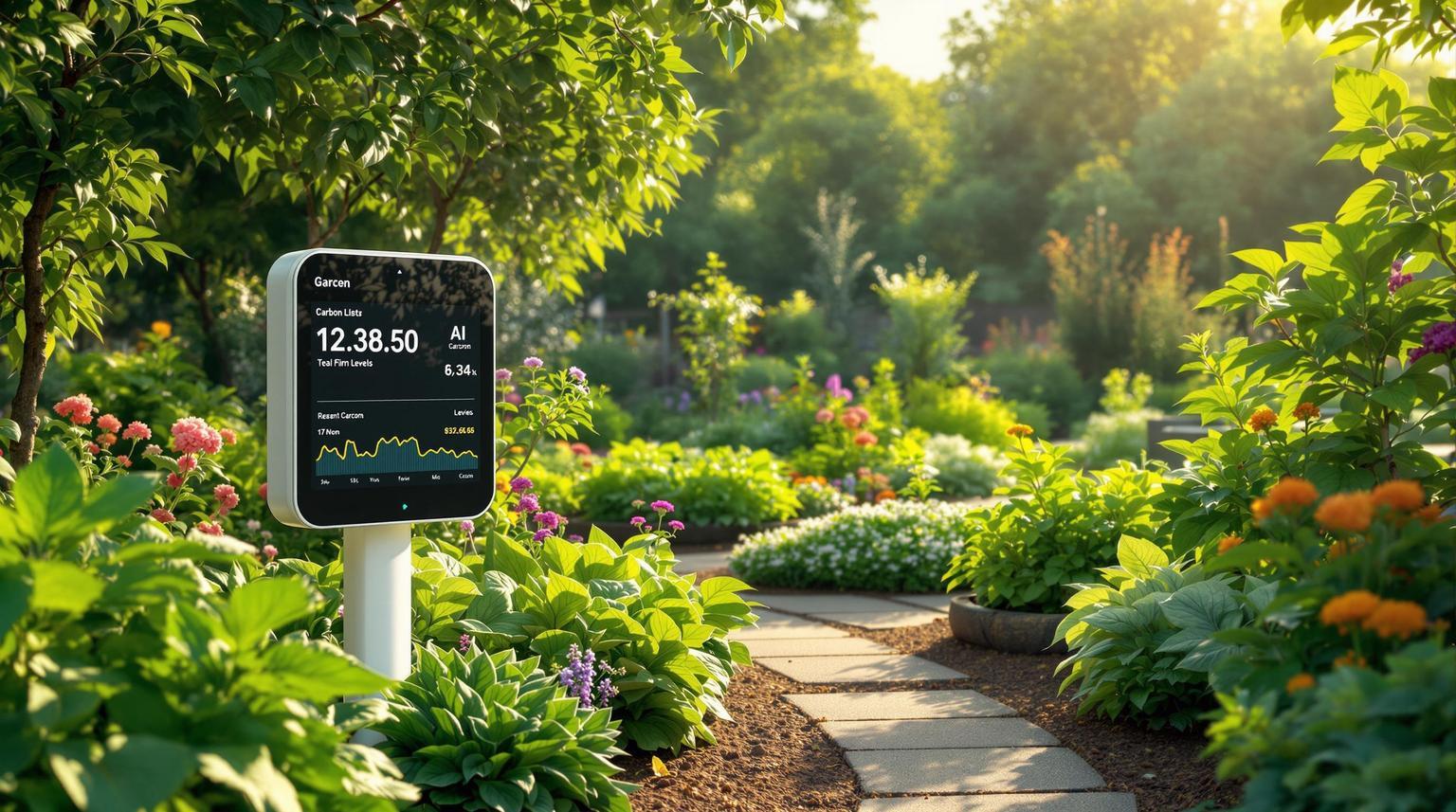
AI Tools for Carbon Sequestration in Gardens
Explore how AI tools can transform your garden into a carbon-sequestering powerhouse with smart plant selection and real-time monitoring.
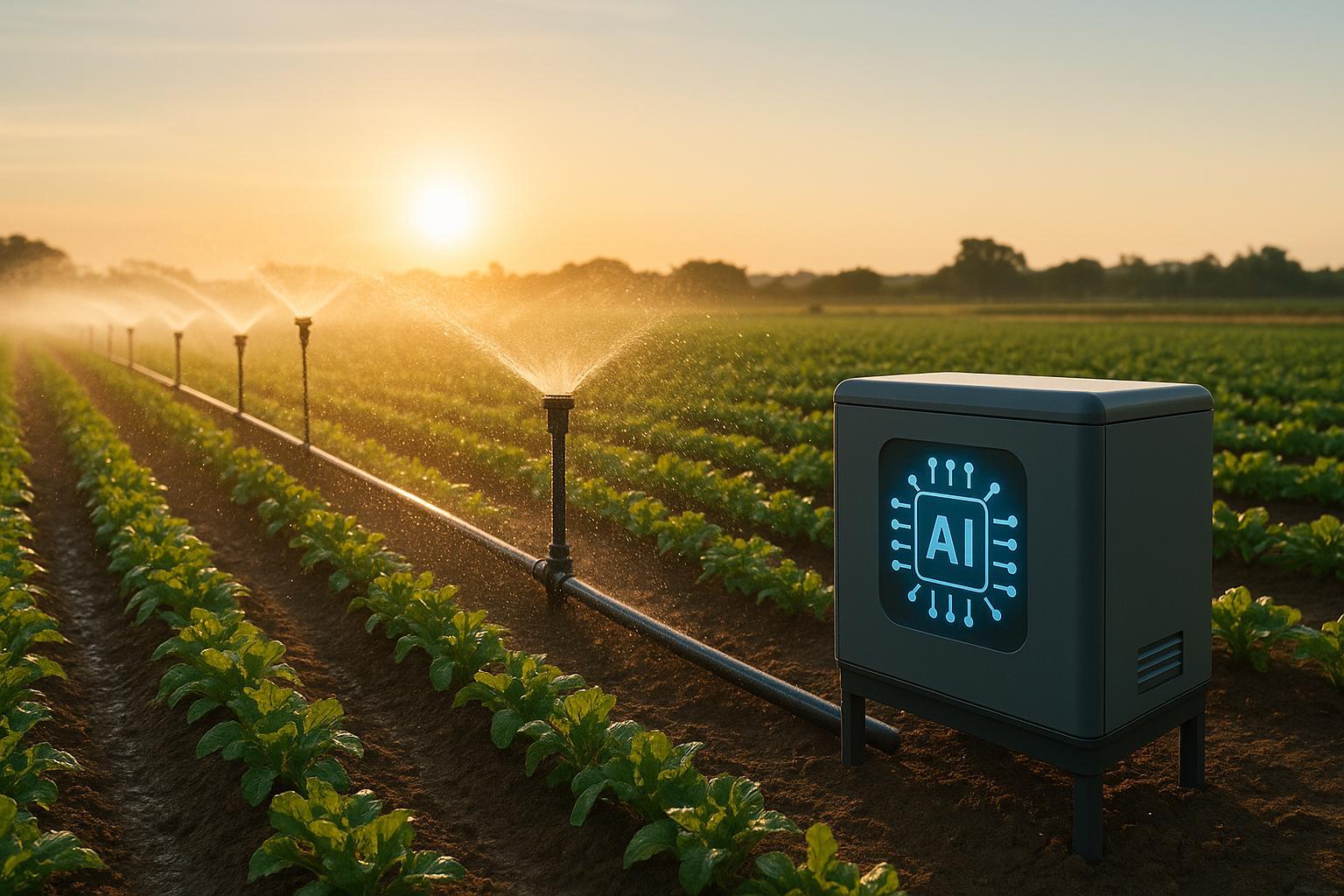
5 Common Irrigation Problems AI Solves
AI-powered irrigation systems tackle common issues like water waste and uneven distribution, promoting healthier plants and reducing costs.
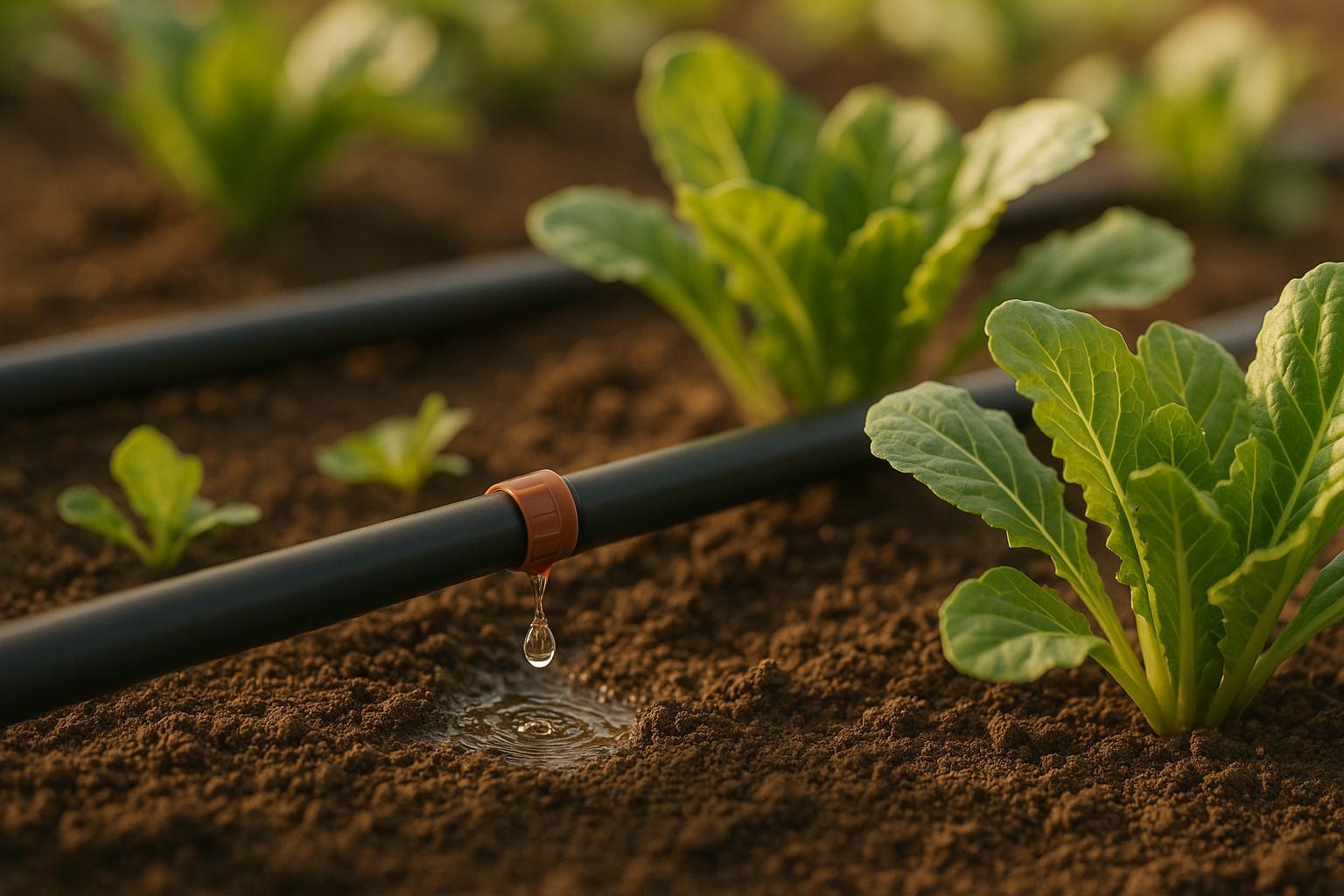
Preventing Algae in Drip Systems: Best Practices
Learn how to prevent algae growth in drip irrigation systems with effective strategies and maintenance practices that protect your plants and water flow.
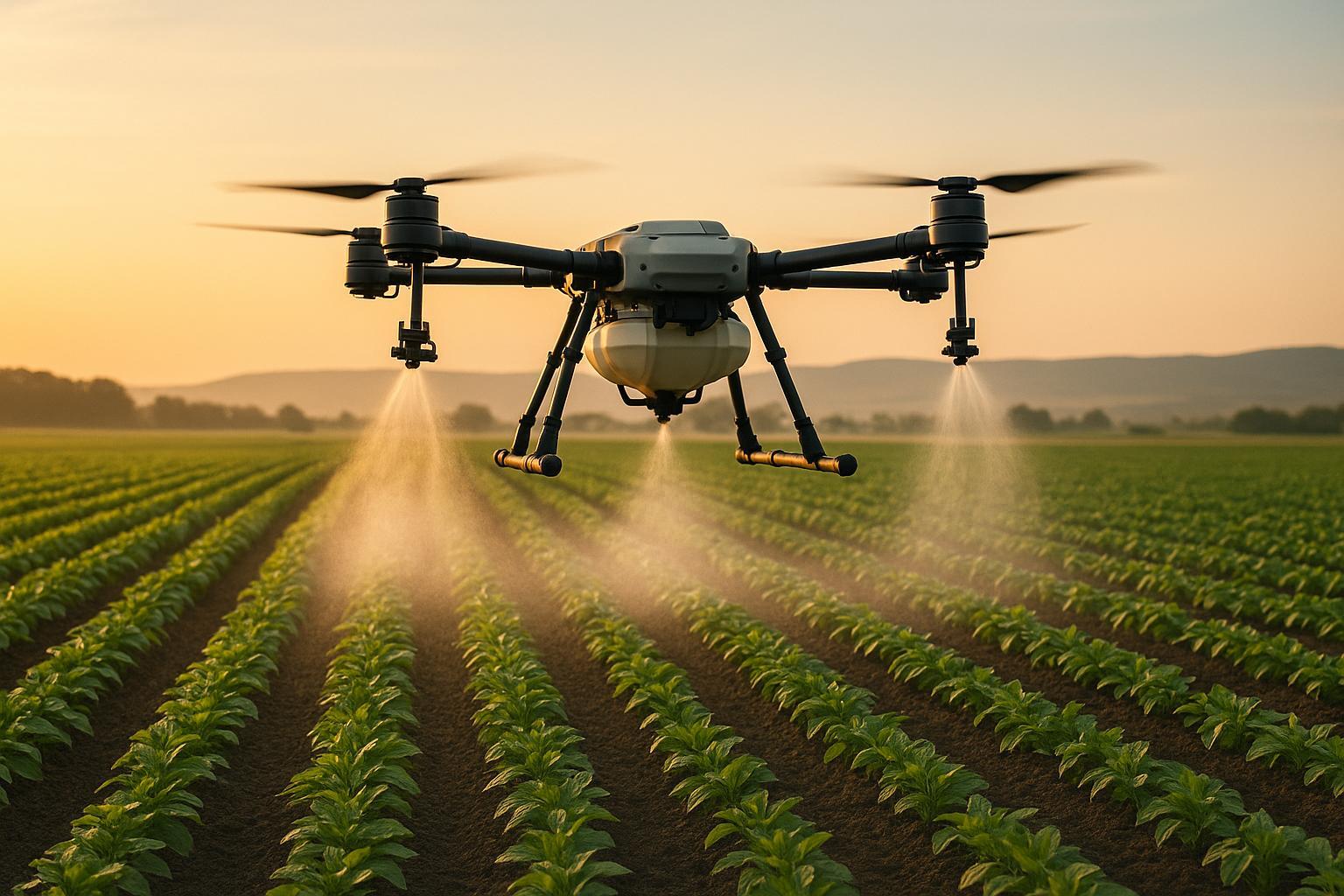
Precision Spraying: AI Drift Reduction Tips
Explore how AI technology enhances precision spraying in agriculture, reducing pesticide drift and improving efficiency for sustainable farming.
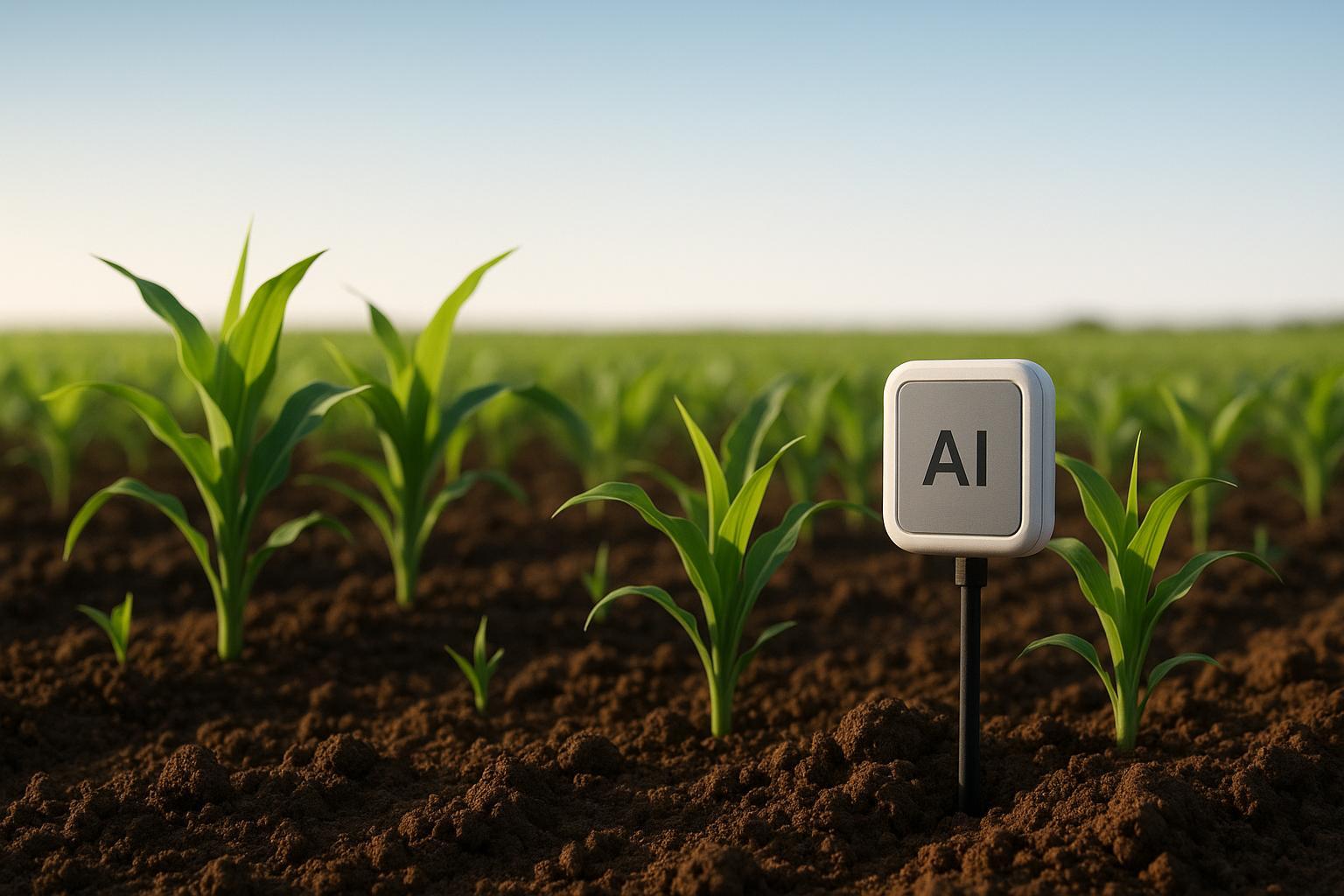
AI for Soil Water Retention Analysis
Explore how AI is revolutionizing soil water retention analysis, optimizing irrigation, and aiding in drought-resistant plant selection for sustainable gardening.
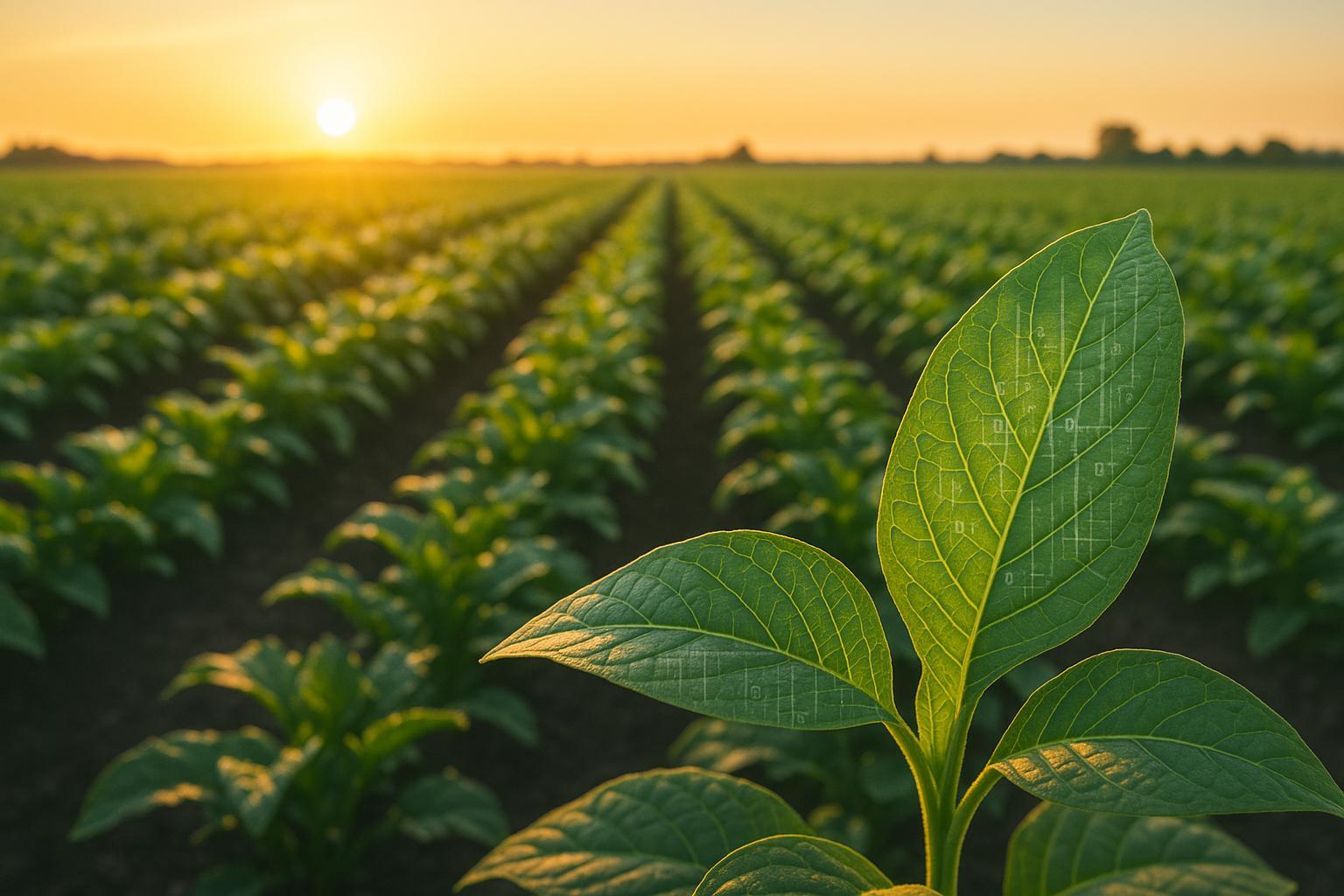
AI in Plant Breeding: Disease Resistance Insights
Explore how AI revolutionizes plant breeding, enhancing disease resistance and accelerating the development of resilient crops.